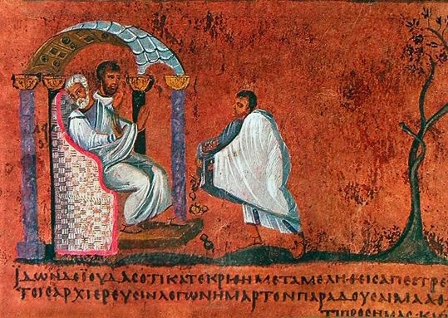
WTI Magazine #85 2016 November 21
Author : Enrico de Iulis Translation by:
Italy has a network of museums that has been recently highlighted by the tourist guides, little known even by the most frequent art visitors: it is the great and diverse proposal of Diocesan Museums. Maybe because they are associated with an idea of monotonous repetition of sacred pieces, or because of very little publicity by the dioceses, these museums continue to hide true beauty and art rarities, staged in modern and sometimes also historical facilities. The latest good news comes from Rossano, on the Ionian coast of Calabria where, after three years of treatment at the Central Institute of Restoration, the Codex Purpureus Rossanensis has been returned to the Diocesan Museum Citizen, expressly rearranged and redesigned for the occasion.
The Codex, known just by a small enclave of people passionate of bibliophile, is a sixth-century after Christ artifact so important that UNESCO has listed it in the Memory of the World Register in 2015.
It is a book entirely composed of pages of purple parchment written in Greek capital letters that tell part of the Gospel (only that of Matthew and much of that of Mark), and some letters. A Gospels then, but with a particular characteristic: it is completely written in gold and silver and not with usual inks of the time or with the original binding of the '700.
This masterpiece was accidentally discovered in 1846 in the sacristy of the cathedral of Rossano, but only thirty years later it was extensively studied by two German scholars, who revealed it to the scientific community. After an unfortunate restoration immediately after the First World War, the community started asking questions about the document. Who created it? Where was it made? Who was the client, and why with just two gospels?
Confronting it with similar findings preserved in Vienna and Paris, the almost unanimous conclusion was to date it from the sixth century AD, being Syria the area where it was created.
The preciousness of the materials used to write it seems to reveal that the client had to be a high rank dignitary of the Byzantine clergy or aristocracy, who came to Rossano in the seventh century, probably to escape the iconoclastic fights erupted in the empire.
The restoration ended last year has added new information about the history of this authentic wonder.
Originally, it had to be a document of circa 400 pages, and not 188 as it is now: therefore, it much probably included also the two missing Gospels.
The purple color of the pages is not due to the extract of the murex, a mollusc used by Greeks and Romans to paint of red color their clothes, but to cudbear, coloring of plant origin widely used during the Renaissance.
Despite the early twentieth-century restoration that unfortunately altered the images, it is still possible to define that all thumbnails are coeval to the sixth century, and there was no one added later.
The code was completely bound and provided with a swing device that ensures both the consultation and the preservation. Finally, from July 2016 it is possible to admire this treasure in the renovated Diocesan Museum of Rossano: it is not often that we can see a testimony of fourteen hundred years ago.



